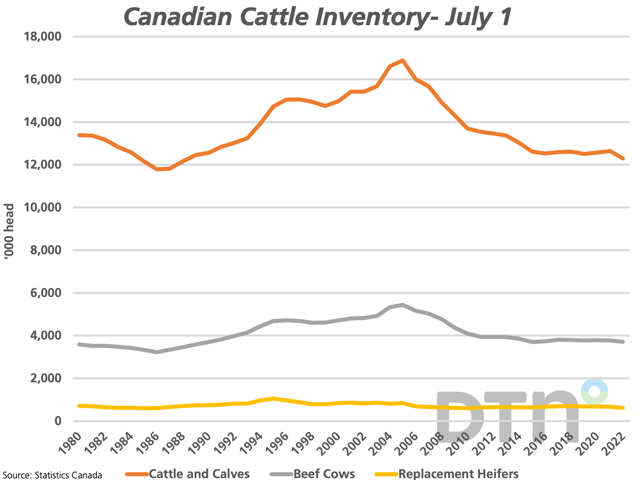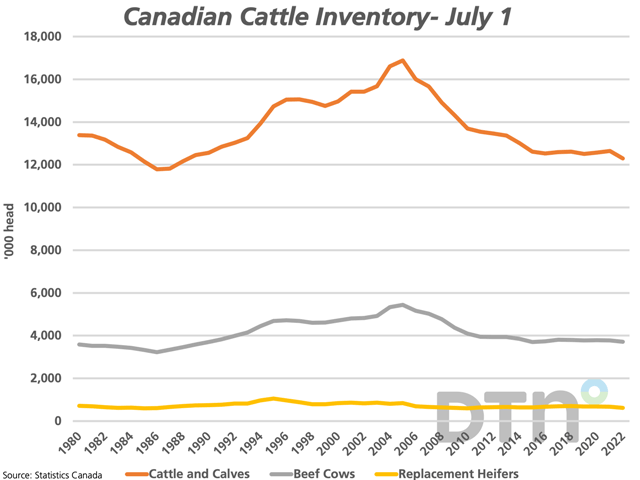Canada Markets
Statistics Canada Reports Lower Cattle Numbers
The drought conditions and high feed costs on the Prairies in 2021 has taken a further toll on cattle numbers, as seen in Statistics Canada's July 1 Livestock estimates.
Statistics Canada has estimated the number of cattle and calves on Canadian farms at 12.3 million head as of July 1, down 2.8% from one year ago, the largest percentage drop seen since 2015, while the smallest herd estimated since 1988, as shown by the brown line on the attached chart. This is the first year-over-year drop seen in three years, with a 0.5% year-over-year increase in numbers reported for July 1, 2020, and July 1, 2021.
The drop was not entirely due to a drop on beef operations; the estimated number of head on dairy operations fell by 0.7% over the past year, while the number of head on beef operations fell by 3.2%. The dairy count has bounced around within a narrow 53,000-head range during the past 10 years. The number of cattle and calves on Canadian farms is down 27% from the record 16.880 million head reached in 2005.
P[L1] D[0x0] M[300x250] OOP[F] ADUNIT[] T[]
Of the 341,100 head drop in the number of head on beef operations, 91.3% was seen in western provinces. The largest drop was 110,900 head or 4.3% in Saskatchewan, followed by a 107,000 head or 2% drop in Alberta.
As seen on the grey line on the chart, the beef cow herd has fallen by 62,500 head or 1.7% to 3.7 million head, the lowest seen in seven years. This is down 31.7% from the record high of 5.436 million reached in 2005. The cow herd increased by 5,500 head in the eastern provinces to 390,600 head, or 10.5% of the nation's total. The cow herd fell by 68,000 head in the western provinces.
By province, the cow herd increased by 23,500 head in Alberta, while fell 22,600 head in Manitoba, by 61,700 head in Saskatchewan and 7,200 head in British Columbia. The Alberta cow herd on all operations has increased to its highest count since 2009 at 1.688 million head, while the Saskatchewan cow herd has fallen to its lowest count since 1994 at 1.045 million, based on July 1 estimates.
The yellow line on the attached graphic represents the number of replacement heifers reported. At 622,100 head, this has fallen for a second year, the lowest count in 12 years and 9.3% below the five-year average.
Cliff Jamieson can be reached at cliff.jamieson@dtn.com
Follow him on Twitter @Cliff Jamieson
(c) Copyright 2022 DTN, LLC. All rights reserved.






Comments
To comment, please Log In or Join our Community .